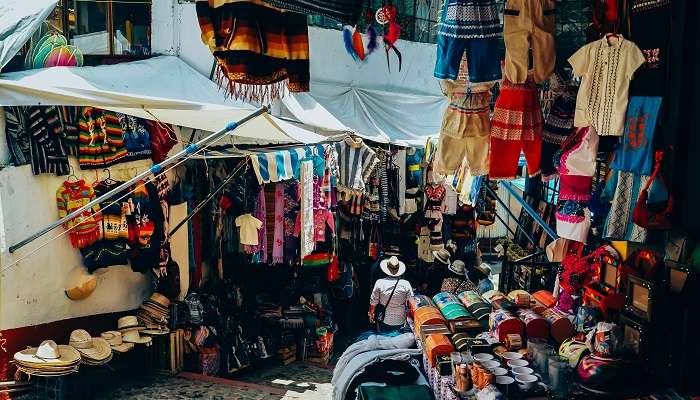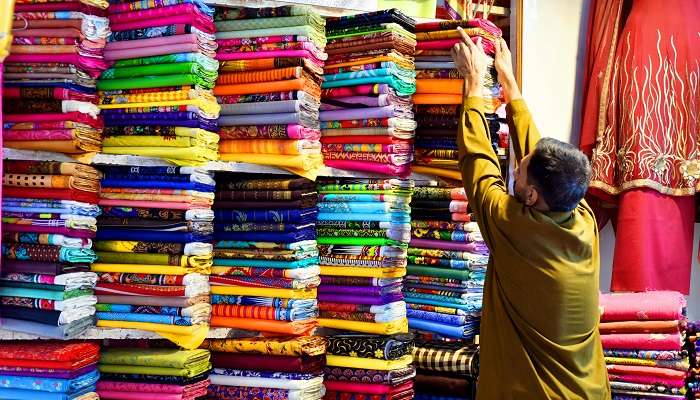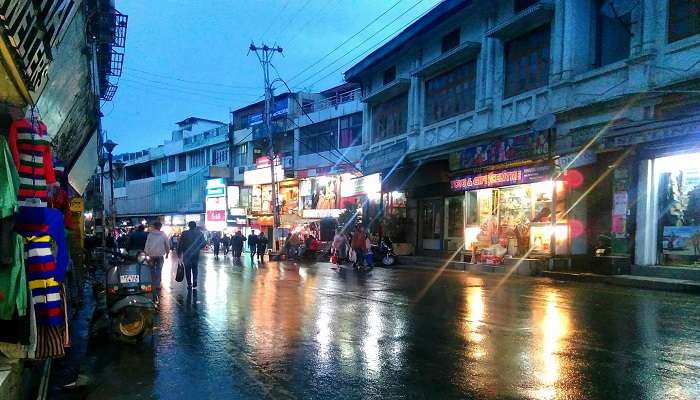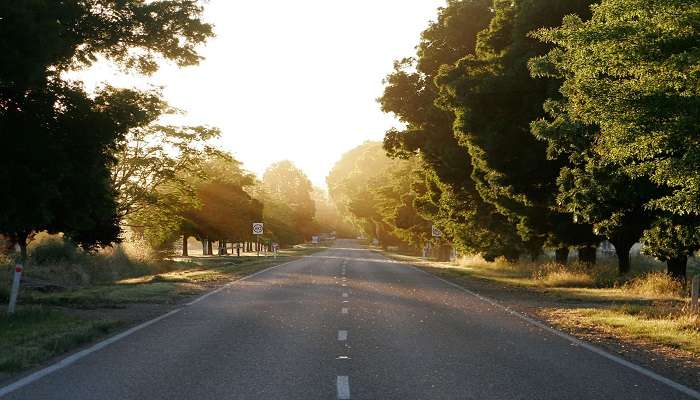Kaza Market In Himachal Pradesh Is An Experience To Remember In 2026

Located in the remote Spiti Valley of Himachal Pradesh, Kaza market stands as a vibrant hub of commerce and culture. This high-altitude bazaar, situated at over 3,800 meters, serves as the commercial centre for the sparsely populated region. Despite its isolation, the Kaza market bustles with activity, offering a mix of traditional Tibetan goods, local handicrafts, and essential supplies. Visitors can explore colourful stalls selling prayer wheels, thangkas, and yak wool products alongside modern necessities. The market also provides a glimpse into the daily lives of Spiti’s resilient inhabitants, showcasing their unique blend of Buddhism and local traditions. For travellers, the Kaza market is not just a shopping destination but a gateway to understanding the rich tapestry of Spiti Valley’s culture.
About Kaza Market

Kaza, the administrative capital of the Spiti Valley, is home to a vibrant and bustling market that offers a delightful shopping experience. In the Kaza market, you can find various local products and handicrafts, including hand-woven woollen shawls, Tibetan prayer flags, traditional jewellery, and intricately carved wooden artefacts. The market also collects Tibetan Buddhist artefacts like thangkas, singing bowls, and prayer wheels.
Additionally, you can explore the stalls for locally produced organic food products, such as organic honey, dried fruits, and spices. Kaza market is a treasure trove for those seeking authentic souvenirs and a glimpse into the vibrant local culture of Spiti Valley.
Must Read: Trekking Near Manali
Things To Buy At Kaza Market

Shopping in Spiti Valley offers a chance to take home unique souvenirs and treasures that reflect the region’s rich culture and heritage. Explore a variety of exquisite carpets, rugs, textiles, and handwoven products showcasing the rich craftsmanship of Spiti Valley. Immerse yourself in the intricate beauty of traditional Buddhist artwork depicting deities and spiritual symbols, offering a glimpse into the spiritual traditions of the region. Adorn your surroundings with vibrant and meaningful prayer flags, carrying sacred mantras and prayers, bringing positivity and spiritual energy to your space. Adorn yourself with the elegance of silver jewellery from Spiti Valley, intricately designed to reflect the region’s cultural heritage.
From necklaces and earrings to bracelets and rings, each piece carries a unique charm and craftsmanship, making it a treasured keepsake. Wrap yourself in the cosy embrace of Spiti shawls. Made with love by local communities, these warm woollen shawls offer comfort and style. Each shawl reflects the rich heritage and craftsmanship of the region, making it a cherished accessory for any occasion. Savour the goodness of locally sourced herbal teas from Spiti Valley. Crafted with native herbs and plants, these teas offer a delightful blend of flavours and therapeutic benefits. Indulge in a soothing cup of nature’s goodness. Spiti Valley’s high-altitude tea gardens yield exceptional teas known for their unique flavours and quality. Cultivated amidst pristine natural surroundings, the tea leaves absorb the essence of the Himalayas, resulting in a refreshing and aromatic cup. Indulge in the pure taste of locally grown tea, supporting sustainable agriculture and local communities.
Places To Visit Near The Market

Key Monastery, located in the Spiti Valley of Himachal Pradesh, India, is a renowned Buddhist monastery with great historical and spiritual significance. The monastery, believed to have been founded over a thousand years ago, houses a remarkable collection of ancient Buddhist scriptures, murals, and thangkas. The antiques of the monastery are handcrafted in a form to sell in the market. Visitors can witness the daily rituals and ceremonies, interact with the resident monks, and immerse themselves in the serene atmosphere. Another place to visit is Tabo Village, situated in the enchanting Spiti Valley of Himachal Pradesh, India. It is a hidden gem renowned for its ancient and sacred treasures. At the heart of the village lies the historic Tabo Monastery, believed to be over a thousand years old. This UNESCO World Heritage Site boasts remarkable murals, sculptures, and scriptures that showcase the finest examples of Indo-Tibetan art.
The monastery is a Buddhist learning and meditation centre, attracting pilgrims and spiritual seekers worldwide. Tabo Village also offers a glimpse into the traditional Spitian way of life, with its mud-brick houses, narrow lanes, and warm hospitality. It is a place where history, spirituality, and natural beauty converge, offering a truly immersive and memorable experience. While specific fair trade organisations in Spiti Valley may not be widely known, the region strongly emphasises sustainable and ethical practices. Local cooperatives and community-based organisations in Spiti Valley often work towards fair trade principles, promoting economic empowerment and preserving the cultural heritage of the communities. These organisations focus on empowering local artisans, craftsmen, and farmers by providing fair wages, preserving traditional skills, and promoting environmentally friendly practices. By supporting local businesses, cooperatives, and community initiatives in Spiti Valley, visitors can contribute to sustainable development and fair trade principles in the region.
Suggested Read: Best Places To Visit In Himachal Pradesh
How To Reach

Being situated at very high elevations in the Himalayas and considered the remotest region in Himachal Pradesh, Lahaul and Spiti are difficult to access for obvious reasons. However, the valley is still accessible by road from Manali via Rohtang Pass and Kinnaur side.
By Air:
The nearest airport to this region is the Bhuntar Airport, near Kullu (245 km away). One has to go to Manali from Bhuntar and then hire a bus or cab to reach Lahaul & Spiti Valley. The nearest international airport to Lahaul & Spiti Valley is in Chandigarh, which is 495 km away. There are buses to Reckong Peo and Manali, from where the traveller has to board a bus to Kaza. For obvious reasons, being situated at very high elevations in the Himalayas and considered the remotest region in Himachal Pradesh, Lahaul & Spiti is challenging to access. The valley is still accessible by road from Manali via Rohtang Pass and Kinnaur.
By Rail:
The nearest railway stations to the Lahaul & Spiti district are the Jogindernagar Railway Station (360 km away) and the Shimla Railway Station (416 km away). Buses and taxis are available to take you to Spiti Valley from here. The Kalka Railway station, which enjoys good connectivity with many parts of India, is located 485 km away.
By Road:
This is the best way to reach Lahaul & Spiti. 2 roads connect the district with the rest of Himachal Pradesh. One route is from Shimla to Kaza in Spiti Valley through Reckong Peo (412 km, 20 hours), and the other route follows the same road from Shimla to Keylong in Lahaul (375 km, 18 hours). One can also reach Lahaul and Spiti Valley from Manali through the Rohtang Pass and the Kunzum Pass. However, this road remains closed for most of the year (9 months) due to heavy snowfall.
Further Read: Manali To Leh Road Trip
Now that you have a list of things to remember for your next vacation to see the beautiful Kaza market, make sure you plan your trip to Himachal Pradesh to these fabulous spots for the experience of a lifetime. Don’t miss out on these opportunities, and book your tickets now!
For our editorial codes of conduct and copyright disclaimer, please click here.
Cover Image Credit: Timothy A. Gonsalves for Wikimedia Commons
Frequently Asked Questions About Kaza Market
When is the best time to visit the Kaza market?
The ideal time to visit the Kaza market is from June to September. During these summer months, the weather is milder, and the roads to Spiti Valley are generally open. The market is more lively during this period, with a greater variety of goods available and more tourists exploring the area.
What unique items can I find in the Kaza market?
Kaza market offers a range of unique items, including traditional Tibetan handicrafts, prayer wheels, thangkas (Buddhist scroll paintings), yak wool products, local jewellery, and Spitian souvenirs. You can also find organic produce from nearby villages and traditional Spitian clothing.
Are credit cards accepted in the Kaza market?
Most vendors in the Kaza market deal primarily in cash. It's advisable to carry sufficient Indian rupees, as ATMs can be unreliable in this remote area. Some larger shops may accept credit cards, but it's not guaranteed.
Is bargaining acceptable in the Kaza market?
Mild bargaining is generally acceptable in the Kaza market, especially for handicrafts and souvenirs. However, remember that many items are handmade by local artisans, so be respectful in your negotiations.
Is there any cultural etiquette to be aware of while shopping in the Kaza market?
People Also Read:
Maeklong Railway Market Sukawati Art Market Markets In Seririt Bali

Innovative Content Writer Focused on Producing High quality, Original Content that drives traffic and engages readers. Experienced in Content strategy and analytics to measure content performance using tools such as SQL, Power BI, Excel.











